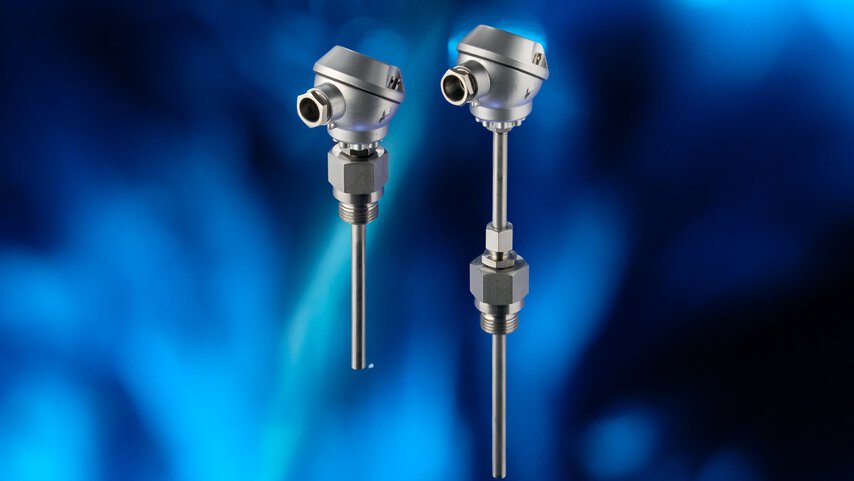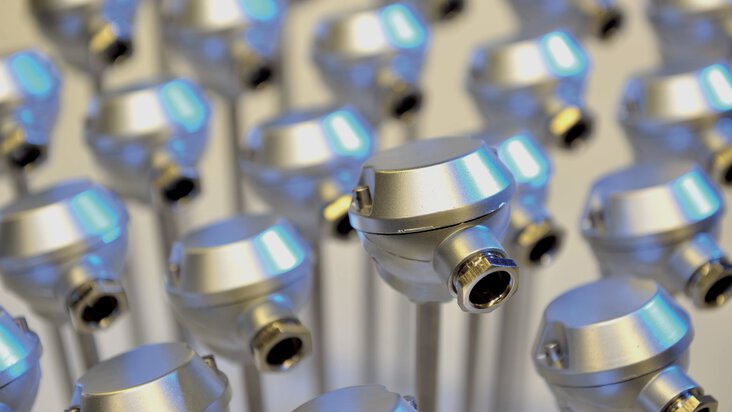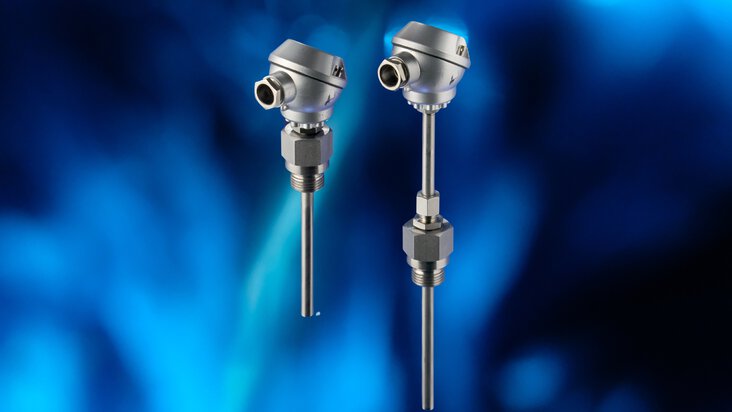

K type thermocouple – characteristics, principle of operation, temperature range
K-type thermocouples are widely used in a variety of industrial applications due to their many advantages and versatility of use. How do they work? What are they made of? What are their properties? These and many other questions are answered in the following post, check it out!
What is a thermocouple?
A thermocouple is a thermoelectric sensor for measuring temperature. It consists of two metal current conductors welded together. Depending on the materials used, they have different levels of thermoelectric voltage and are suitable for use at different temperatures.
The most commonly used thermocouple types are K and J.
How does a thermocouple sensor work? Type K thermocouple – principle of operation
The operation of a thermocouple is based on the Seeback effect. It relies on the fact that when a closed circuit is formed by connecting two different metals at two locations, and these junctions are held at different temperatures (one at the measurement location, the other at a fixed reference temperature location), an electromotive force is induced in the circuit.
The magnitude of the induced electromotive force varies for different combinations of metals and is proportional to the temperature difference between the junctions.

Thermoelectric effect
What is K-type thermocouple?
Type K thermocouple probes are made of chromel and alumel materials and can be categorised as general-purpose sensors. These thermoelectric sensors are popular due to their wide temperature measurement range and high technical potential. However, these thermocouples are not universally applicable - we advise against using them in rooms with a high sulphur content in the air, as this adversely affects the performance of both sensor electrodes.
Thermocouple type K – temperature range and characteristics
K-type thermocouples are based on a chromel-aluminium alloy. They are among the most popular temperature sensors for a wide range of applications. Their wide measuring temperature range is from -200°C to +1350°C. In non-oxidising and inert environments, K-type sensors are used up to 1260°C (maximum temperature range).
Thermocouple type K – accuracy
The accuracy of K thermocouples is up to 41 μV/°C.
Advantages and disadvantages of K-type thermocouple sensors
Type K thermocouple – advantages
-
can operate in harsh environments and different atmospheres
-
can be used in a variety of applications due to their widest operating temperature range
-
NiCr-Ni thermocouple has a higher resistance to oxidation than "E" and "J" thermocouples and is therefore better for high temperatures above 500°C
-
affordable price
-
fast response
-
small size
-
reliability
-
accurate temperature measurements can be obtained
Disadvantages of K-type thermocouples
-
not suitable for reducing atmospheres but can withstand metallic fumes
-
faster aging of the electromotive characteristics, compared to thermocouples made of noble materials (B, R and S)
Type K thermocouples – construction
The K-type thermocouple sensor is constructed, like any thermocouple, from two wires made of different materials. In the K-type, one wire is made up of 90% nickel and 10% chromium and the other is made up of 95% nickel, 2% aluminium, 2% manganese and 1% silicon.

Type K thermoelectric sensor with bayonet process connection
J type vs k type thermocouple – similarities and differences
Type J (Fe-CuNi) thermocouple, compared to type K, has a lower lifetime at higher temperatures and a smaller temperature range. Type K tends to be more durable than type J because the JP wire oxidises quickly, especially in the high temperature range. Therefore, we recommend type J thermoelectric sensors for lower temperatures down to 0°C to 600°C. They have a similar price and are equally reliable and accurate.
Applications for K-type thermoelectric sensors
The properties of these temperature sensors allow them to be used to monitor temperature in a wide variety of environments, such as water, mild chemical solutions, gases or dry areas.
They are most commonly used for applications above 550°C up to the maximum working pressure of the thermocouple. Type K, due to its relative radiation hardness, is also commonly used in nuclear applications.
- ${title}${badge}

